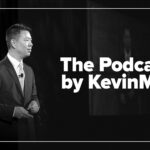Children often surprise us with the seriousness they bring to a clinic visit. Every so often, when the room feels tense, I turn to a simple question and ask what their favorite toy is. Caregivers smile, and children lean forward with the kind of excitement that only play can spark. In a moment, the atmosphere changes. The room feels lighter, the conversation easier, and the visit begins to unfold with a warmth that no medical tool could create.
Over the past few months, I have returned to simple objects from my childhood not because they are extraordinary but because they reveal different aspects of how we connect with patients. Laughter brings forward presence and humility. Food offers a window into culture, belonging, and family. In this piece, I look at toys as a way to understand imagination and the bridges that form when we meet children in the worlds they create.
As a pediatrician, I have learned that play is not a distraction. It is an invitation. When I walk into a room and find a child immersed in Legos or a dollhouse or a makeshift story created from craft supplies, I can choose to redirect toward the caregivers, or I can kneel down and enter the world they have already built. Choosing to engage with patient’s play changes the direction of the visit. It shows them that their world matters and that they are more than the diagnosis that brought them in. Even in a digital era, toys still spark imagination and offer a kind of ease that no device can replicate, reminding us that joy belongs in medicine too.
My own childhood in Argentina lives in these moments. I grew up between an older brother and a younger sister, and some of my strongest memories come from the times we transformed a room into a universe of our own making. With my brother, it was He-Man. We kept a long mental list of which action figures we still hoped to get, talking about it at night while sharing a bedroom. With my sister, it was Barbies, Ponies, and the tiny Pinypons scattered across her room. We had a small Pinypon house with a miniature pool, and we would slide the toys into the water again and again, filling the entire room with storylines that made sense only to us.
There were afternoons when I played alone, creating heroes and villains out of boxes and mismatched characters, losing myself in the freedom of play. I remember shining a flashlight through the Thundercats logo to project it across the wall, summoning imaginary allies. And I still recall the last toy I ever bought for myself as a teenager, too old to admit I wanted it. My mother conspired with me and pretended we were buying it for someone else. It was Bluegrass from the SilverHawks, with his cowboy hat and electronic guitar. I can still feel the joy of holding that box.
These memories have softened with time, but the emotions behind them remain clear. They shaped the way I see my patients. They shaped the father I became. With my daughter, we created stories with puppets and stuffed animals. There was the piggy with terrible manners and the wolf who tried hard not to be a predator and cried dramatically when he failed. We laughed, we invented, we connected. Those moments were small, but their echo is large. A child, a sibling, a doctor, a father. Across all these eras, the joy of shared playtime has remained constant.
This is why I never underestimate the power of toys in the exam room. Not long ago, I saw a patient with her very energetic four-year-old sister racing around the exam room. While my trainee spoke quietly with the mother, I sat with her and began playing dolls. I asked about the doll’s name. I made the doll laugh and cry. She was delighted. For those few minutes, the room felt lighter. Her mother relaxed. My trainee could focus. And when it was time to leave, the little girl held tightly to my arm, wanting the moment to last just a little longer.
That is the quiet power of play. It steadies a room. It brings families closer. It reminds us that medicine is not only about diagnosis but about connection. We may not always cure, but we can always honor our patient’s playtime and imagination, and when we are intentional, we can share in those moments with them.
As we approach Thanksgiving, I find myself thinking about the toys we carry, the memories they hold, and the stories they continue to create in clinical spaces. I remain grateful to my patients for their love, their understanding, their patience, the stories they offer, and the chance to share in their imagination, their worlds, and their toys. They motivate me every day to be the best version of myself.
Diego R. Hijano is a physician-scientist specializing in pediatric infectious diseases at St. Jude Children’s Research Hospital and an assistant professor in the department of pediatrics at the University of Tennessee Health Science Center. Born and raised in Argentina, he blends clinical expertise with a deep commitment to human connection, particularly in the bone marrow transplant and oncology units, where he supports patients and families through some of medicine’s most challenging moments. Dr. Hijano’s work focuses on advancing compassionate, equitable, and effective care while shaping institution-wide improvements in healthcare delivery. His research contributions can be explored via his NCBI bibliography, and more about his career is available on his LinkedIn and Bluesky.



















![Medicine's silence on RFK Jr. [PODCAST]](https://kevinmd.com/wp-content/uploads/Design-1-190x100.jpg)
![Rebuilding the backbone of health care [PODCAST]](https://kevinmd.com/wp-content/uploads/Design-3-190x100.jpg)

![Why bad math (not ideology) is killing DPC clinics [PODCAST]](https://kevinmd.com/wp-content/uploads/The-Podcast-by-KevinMD-WideScreen-3000-px-4-190x100.jpg)
